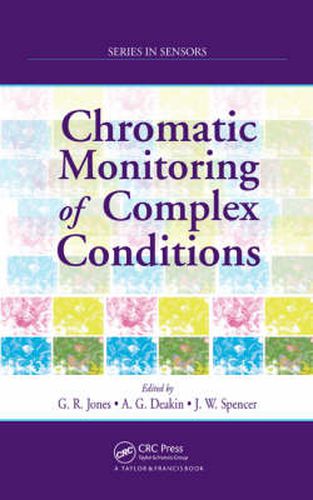Readings Newsletter
Become a Readings Member to make your shopping experience even easier.
Sign in or sign up for free!
You’re not far away from qualifying for FREE standard shipping within Australia
You’ve qualified for FREE standard shipping within Australia
The cart is loading…






Explaining the chromatic methodology for the intelligent monitoring of complex systems, Chromatic Monitoring of Complex Conditions demonstrates that chromatic processing is analogous to human vision yet also extends into a wide range of nonoptical domains.
Taking a practical approach that utilizes many examples and graphs, the book presents the origin and methodology of chromaticity, before delving into the various applications of chromatic methods. It first describes characteristics of chromatic systems and chromatic processing algorithms, such as H, S, V transformation and basic x, y, z algorithms. The book then discusses the areas in which chromatic monitoring can be deployed, including electrical plasmas, industrial liquids, broadband interferometry and polarimetry, biological tissues and fluids, the environment, and acoustical and vibration signals.
With contributions from international authorities in the field, this volume shows how chromatic analysis is useful for investigating diverse complex systems and for processing large amounts of information about system behavior, from direct physical parameters to holistic system overviews. By covering the broad capabilities of the methodology, it provides the basis for adapting chromatic techniques in future work.
$9.00 standard shipping within Australia
FREE standard shipping within Australia for orders over $100.00
Express & International shipping calculated at checkout
Explaining the chromatic methodology for the intelligent monitoring of complex systems, Chromatic Monitoring of Complex Conditions demonstrates that chromatic processing is analogous to human vision yet also extends into a wide range of nonoptical domains.
Taking a practical approach that utilizes many examples and graphs, the book presents the origin and methodology of chromaticity, before delving into the various applications of chromatic methods. It first describes characteristics of chromatic systems and chromatic processing algorithms, such as H, S, V transformation and basic x, y, z algorithms. The book then discusses the areas in which chromatic monitoring can be deployed, including electrical plasmas, industrial liquids, broadband interferometry and polarimetry, biological tissues and fluids, the environment, and acoustical and vibration signals.
With contributions from international authorities in the field, this volume shows how chromatic analysis is useful for investigating diverse complex systems and for processing large amounts of information about system behavior, from direct physical parameters to holistic system overviews. By covering the broad capabilities of the methodology, it provides the basis for adapting chromatic techniques in future work.